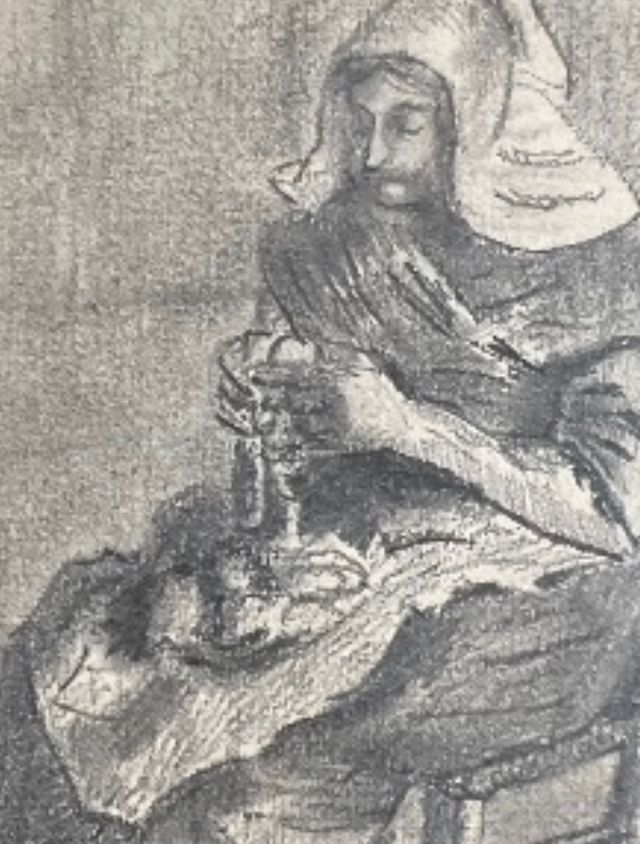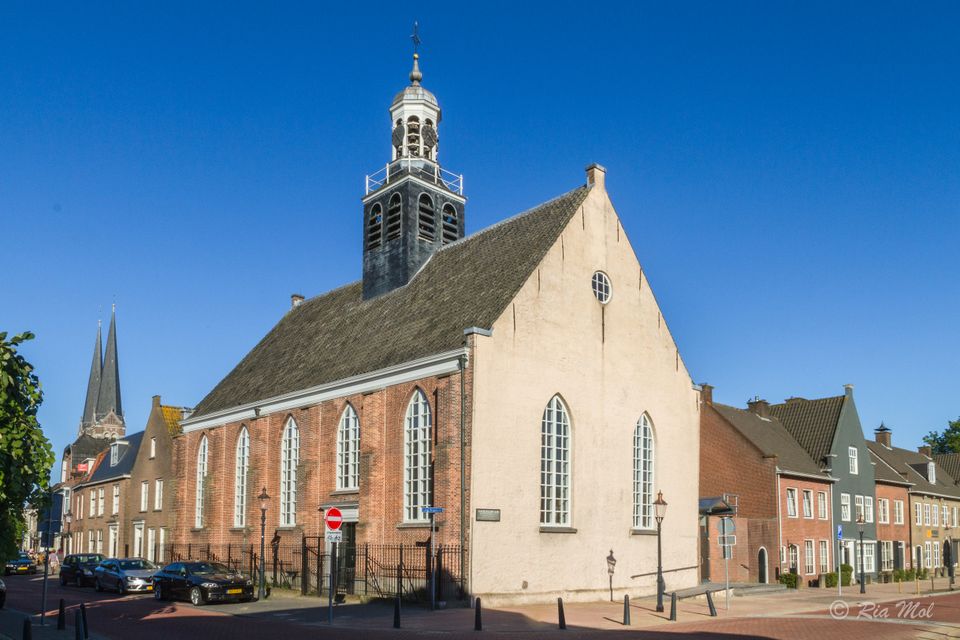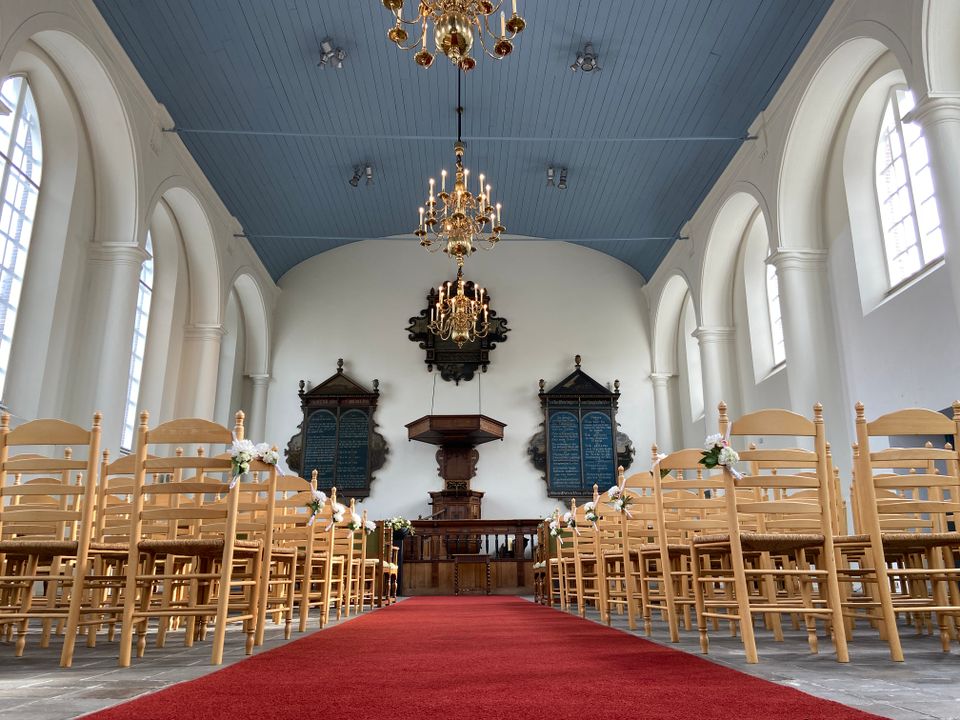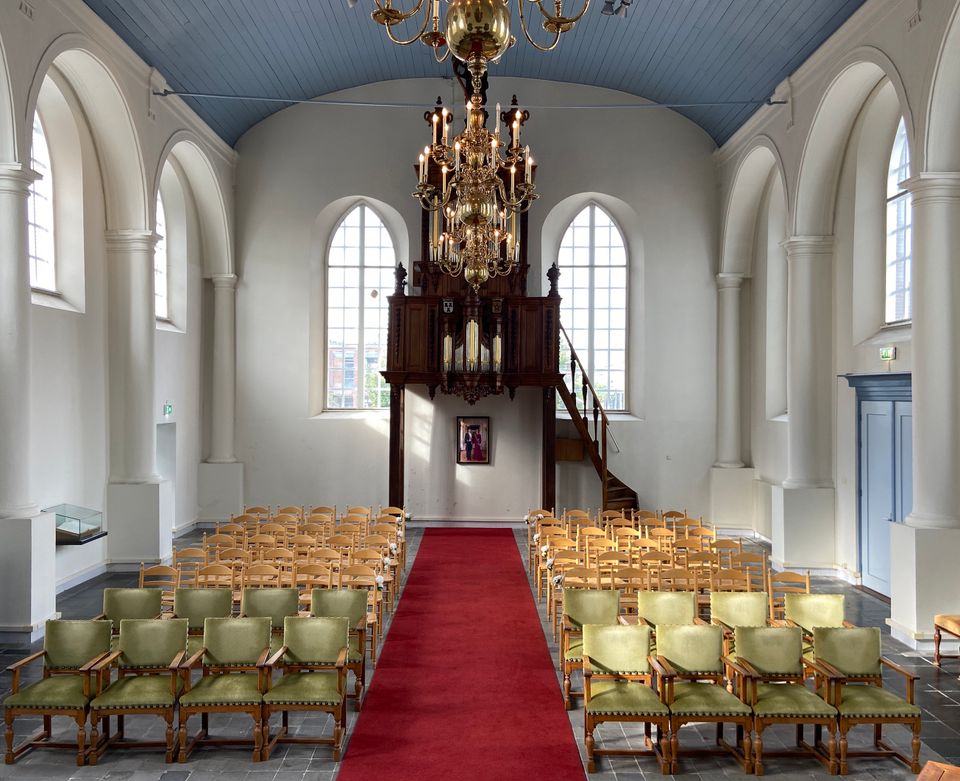'Wedding church' 40th Van Gogh Monument in Brabant
Van Gogh experts have nominated the Dutch Reformed Church at Van Bergenplein 1 in Etten-Leur to become a Van Gogh Monument. This church, known as 'Trouwkerkje' (Wedding Church) increases the number of official Van Gogh Monuments in North Brabant to 40. Van Gogh visited the church in 1881 and was befriended by the family of Minister Kam, with whom he went sketching in and around Etten-Leur.
The team of experts Ron Dirven (Vincent van GoghHuis Zundert) and Helewise Berger (Noordbrabants Museum) researched Vincent van Gogh’s relationship with Brabant in collaboration with the Van Gogh Brabant Foundation. Teio Meedendorp, senior researcher Van Gogh Museum Amsterdam, has approved the 'Wedding Church' as a Van Gogh Monument on behalf of the Van Gogh Museum Amsterdam. This status emphasises the importance of the location on the life and work of Vincent van Gogh who was born and raised in Brabant.
The ‘Wedding Church’ in Leur
The former Dutch Reformed Church in Leur (the northern part of Etten-Leur) dates from 1614 and is a national monument. The church’s interior includes three decorated text panels (1616-1648), church pews with neo-Gothic linen fold carvings and an organ made by Jacobus Zeemans (1716). It is owned by the community of Etten-Leur and is nowadays used as a church for wedding services, exhibitions and concerts.
Van Gogh heritage in Etten-Leur
This new monument is a valuable addition to the Van Gogh Heritage of Etten-Leur, the community where Vincent van Gogh started his career. The artist went through a turbulent period in Etten-Leur which would prove to be of significant importance to his future development as an artist. The exhibition in the Van Gogh Church illustrates this period and offers visitors an in-depth view of Van Gogh’s life, in combination with a walk past the Van Gogh Monuments.
Helewise Berger: ‘Vincent van Gogh visited this church in 1881 together with his artist friend Anthon van Rappard. The minister was a good acquaintance and colleague of Vincent’s father Theodorus van Gogh.’
Sketch pad of minister Kam’s children
Vincent van Gogh regularly went sketching with minister Kam’s children. The Kam family’s archive contains several well preserved sketch pads with sketches dating from 1881 which were made in Etten and Leur. The sketches, none of which have previously been published, are valuable reference material which give us more insight into Vincent’s period and work in Etten-Leur. One of these sketches of a farmer’s wife peeling potatoes by Catharina Cornelia Kam shows a striking resemblance to a model which Vincent sketched here.
Ron Dirven: ‘Vincent spent a lot of time with Rev. Kam’s children during his stay at the rectory in Etten from April to December 1881. Like Vincent, he also had artistic ambitions. We expect that further research into the sketch books, documents and photos from the Kam family’s archive will reveal more details, and we are pleased to report that we can investigate this’.
Alderman of Etten-Leur, René Verwijmeren: 'Etten-Leur has played an important role in the life and work of Vincent van Gogh. We are delighted that this 40th monument will give Van Gogh enthusiasts an extra reason to immerse themselves in his story. The forthcoming renewal of the exhibition in the Van Gogh Church in the centre of the town, and the themed farmer’s room in Museum De Kunst van het Leven (The Art of Living), will tell the unique story of the origins of Vincent van Gogh in Brabant, together with Zundert and Nuenen.
Atlas Van Gogh in Brabant
Van Gogh Brabant is committed to the preservation and development of Vincent’s heritage and what this stands for. A total of 40 locations in Brabant have been nominated as Van Gogh Monuments. These are described and illustrated in detail in the Atlas Van Gogh in Brabant. This will be published next year in collaboration with the Noordbrabants Museum and WBOOKS publishers, and will contain new insights and backgrounds to Vincent’s life in North Brabant
"The sketches by minister Kam's children, none of which have previously been published, are valuable reference material which give us more insight into Vincent’s period and work in Etten-Leur. One of these sketches shows a striking resemblance to a model which Vincent sketched here."





